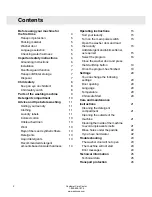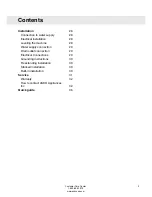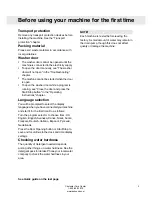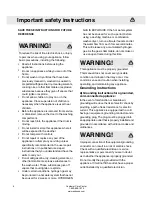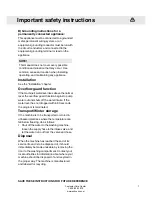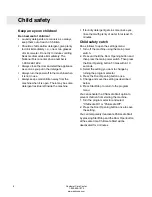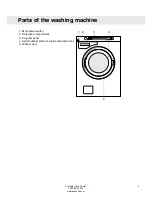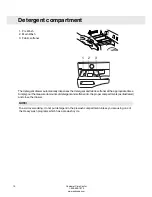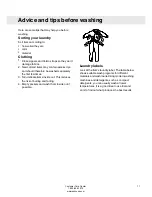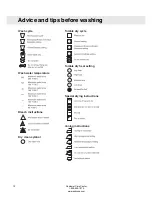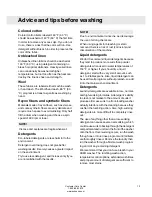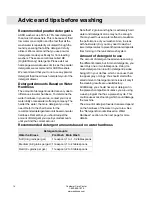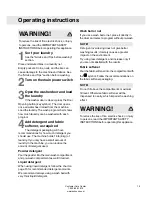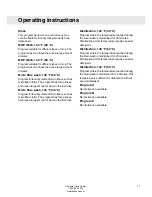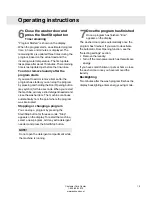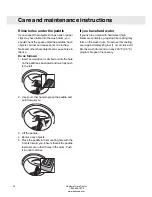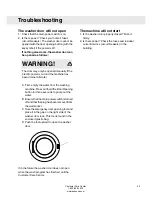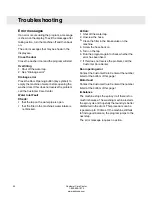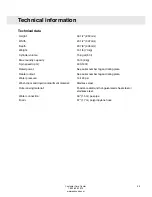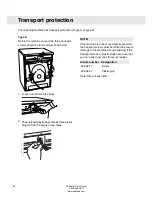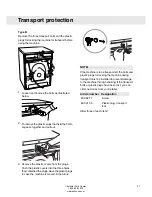
Colored cotton
Colored cotton items labeled 140 °F (60 °C)
should be washed at 140 °F (60 °C) the first time
in order to remove any excess dye. If you do not
do so, there is a risk that the color will run. Use
detergent without bleach in order to preserve the
color of the fabric.
Unbleached linen
Unbleached linen fabrics should be washed at
140 °F (60 °C), using detergent containing no
bleach or optical whiteners. Heavily-soiled linen
can occasionally be washed at higher
temperatures, but not too often as the heat can
destroy the linen’s sheen and strength.
Wool
These fabrics are labeled either machine wash
or hand wash. The Wool/hand wash, 86 °F (30
°C) program is at least as gentle as washing by
hand.
Rayon fibers and synthetic fibers
Materials made of rayon fibers, such as viscose,
and some synthetic fibers are very delicate and
require much space to avoid wrinkling. Only half
fill the drum when washing and choose a spin
speed of 800 rpm or lower.
NOTE!
Viscose and acetates are fragile when wet.
Detergents
Eco-labeled detergents are less harmful to the
environment.
Detergent overdosing does not give better
washing results; it merely causes a greater impact
on the environment.
Try to use less detergent, and increase only if you
are not satisfied with the results.
NOTE!
Due to environmental concerns, we discourage
the use of strong chemicals.
When using agents for bleaching or stain
removal, there is a risk of rust (corrosion) and
discoloration of the machine.
Liquid detergents
We don’t recommend liquid detergents because
they tend to produce more suds than powder
detergents when used in water temperatures of
150° F or higher. If you should try a liquid
detergent, start with a very small amount, such
as 1 to 2 tablespoons. Also, liquid detergent can
be used for all programs without prewash, so add
it into the main wash compartment.
Detergents
Laundry detergents are available in low-, normal-
and high-sudsing formulas. A detergent´s ability
to clean is not relative to the amount of suds it
produces. Excess suds in a front-loading washer
actually interfere with the cleaning because they
cushion the tumbling action. Also, high-sudsing
detergents are more difficult to completely rinse
out.
The use of anything other than a low-sudsing
detergent can cause severe oversudsing, which
could cause suds to backup through the detergent
compartment and run down the front of the washer
onto the floor. If oversudsing occurs, run the wash
through one or more rinse programs until all items
are thoroughly rinsed. Remove the laundry then
run the washer through a Normal wash program
to get rid of any remaining detergent.
We recommend that you don’t use bleach in your
ASKO washer. The tumbling wash action,
temperature control options, extended wash times
and proper amount of detergent are sufficient to
remove most stains.
13
Customer Care Center
1-800-898-1879
www.askousa.com
Advice and tips before washing


